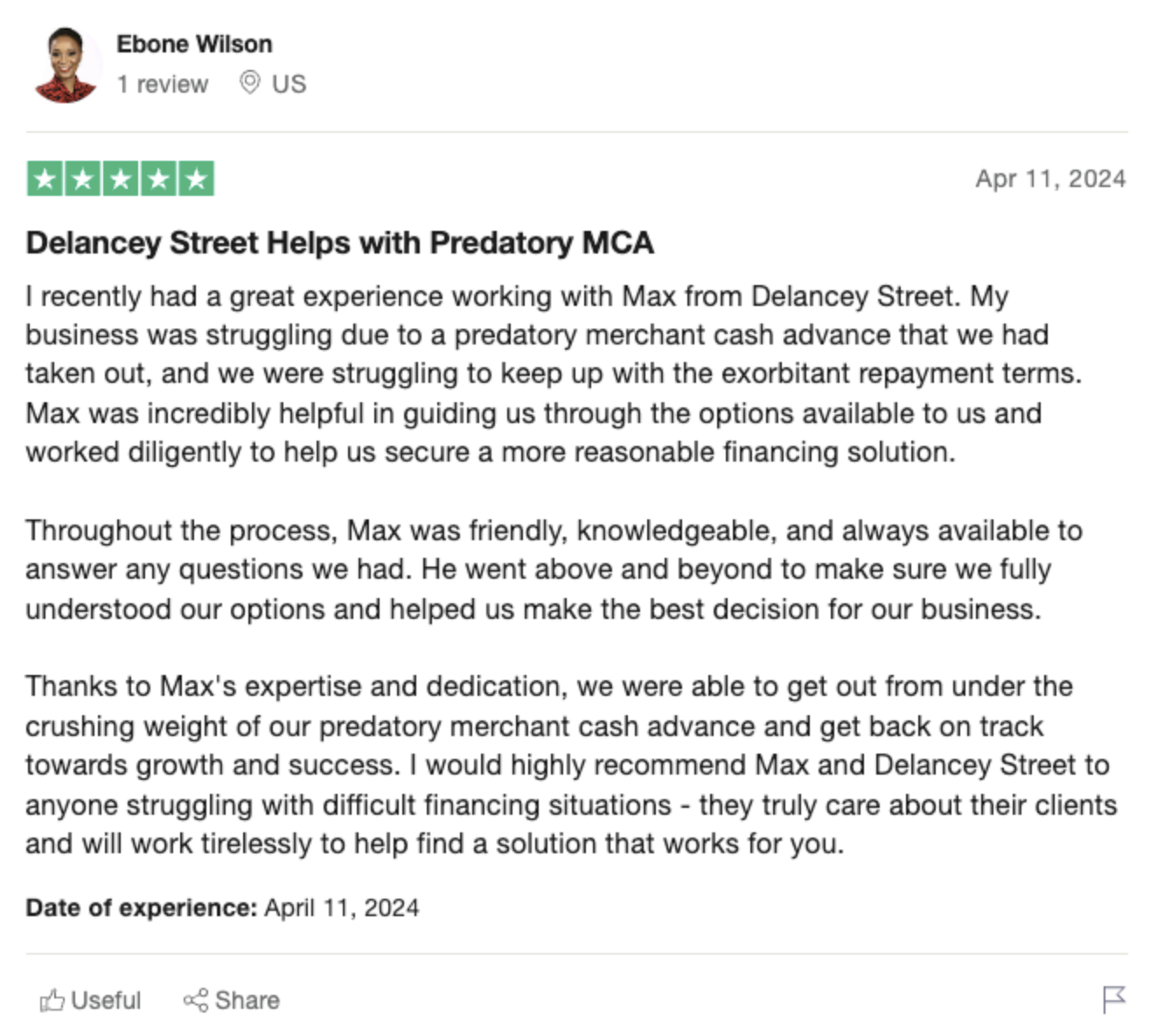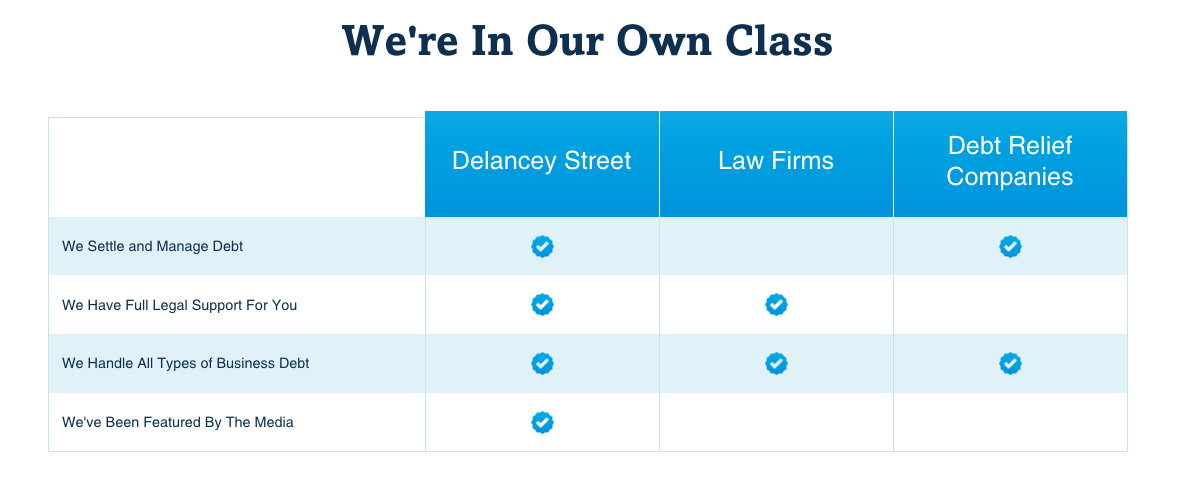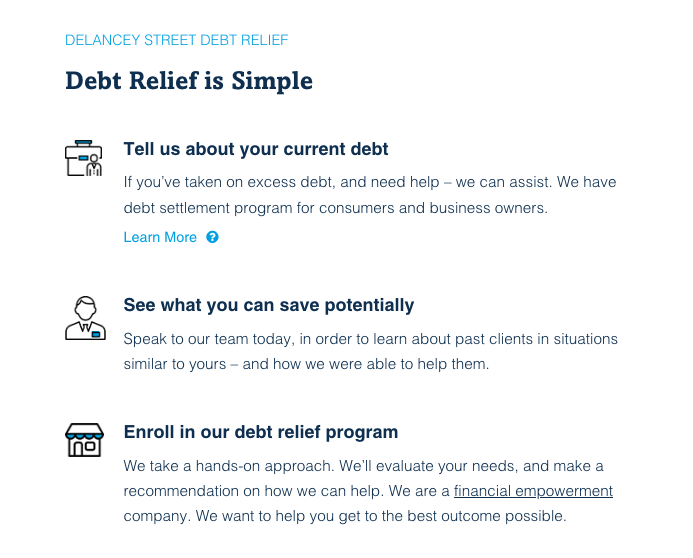Business Debt Relief FAQs: Answering Common Questions About Getting Out of Business Debt
Running a business can be financially challenging, especially when unexpected expenses come up or revenue slows down. If your business has racked up a lot of debt, you may be wondering if debt relief is a good option. Here are some frequently asked questions about business debt relief answered:
 -
-What types of business debt can be relieved?
Common types of business debt that may be eligible for relief include:
- Business loans – Term loans, lines of credit, SBA loans, equipment financing loans, and more.
- Business credit cards – Both personal and corporate credit cards used for business expenses.
- Accounts payable – Outstanding invoices and bills owed to vendors or suppliers.
- Business taxes – Payroll taxes, sales taxes, income taxes, and other tax debts.
- Commercial mortgages – Loans used to purchase commercial real estate.
- Commercial leases – Debt related to breaching a commercial property lease.
- Judgments – Court-ordered debts resulting from lawsuits or legal disputes.
- Personal guarantees – Personal liability for business debts that owners cosigned for.
What are the pros and cons of business debt relief?
Potential pros:
- Lower monthly payments that are more affordable.
- Reduced or eliminated interest charges and fees.
- Consolidation of multiple debts into one payment.
- Stop collection calls and lawsuits.
- Increased cash flow for business operations.
- Avoid bankruptcy and preserve assets.
Potential cons:
- Damage to business credit scores and ratings.
- Higher interest rates on future loans.
- Tax liability if debt is forgiven.
- Upfront fees for debt relief services.
- Potential for scams and predatory companies.
- Creditors may not agree to negotiate debts.
- Bankruptcy can be expensive and time consuming.
How can I qualify for business debt relief programs?
Eligibility criteria can vary by program, but generally your business may qualify for debt relief if:
 -
-- It has a large amount of unmanageable debt.
- Loan payments and other debts are severely delinquent.
- Your business is facing financial hardship or distress.
- Bankruptcy is being considered as an option.
- You have attempted to negotiate with creditors already.
- Your business has steady revenue to make reduced payments.
Meeting with a business debt relief company for a free consultation can help determine if your specific situation may qualify for their services.
What are the main steps in the business debt relief process?
Though the details can vary, the basic debt relief process often includes:
- Review debts and budget to see if relief makes sense.
- Select a solution like consolidation, settlement or bankruptcy.
- Stop making payments to creditors (for settlement).
- Set aside funds to save up for lump sum payoffs.
- Negotiate with creditors to agree on reduced payoff amounts.
- Make the lump sum payments as accounts are settled.
- Continue reduced payments on any remaining debts.
- Rebuild business credit over time.
This process can take anywhere from several months to several years depending on the amount of debt and settlement terms.
How much does business debt relief cost?
Costs vary based on the type and amount of debt as well as which debt relief company you work with. Potential fees include:
- Debt consolidation – Usually 1-5% of the total debt amount plus application fees.
- Debt settlement – Average 15-25% of the enrolled debt balance.
- Bankruptcy – Attorney and filing fees of $5,000 or more.
- Debt management – Monthly fees around $50-100 plus setup costs.
- Debt negotiation – Contingency fees of 20-30% of settled debt.
Get fee estimates in writing from any companies you consider working with. Legitimate firms should clearly explain their full pricing.
 -
-What are some alternatives to business debt relief?
If debt relief does not seem right for your situation, some other options to deal with business debt include:
- Debt refinancing with better loan terms.
- Taking out home equity or personal loans.
- Asking investors for more capital.
- Liquidating assets to pay off debts.
- Increasing sales and revenues.
- Cutting expenses to have more cash flow.
- Seeking temporary hardship arrangements with creditors.
- Filing taxes to use net operating losses.
- Working out payment plans with creditors.
What are the tax implications of business debt relief?
One key thing to understand is that forgiven, cancelled, or settled business debts are often considered taxable income by the IRS. For example:
- If a creditor forgives $50,000 of a business loan, that $50,000 may be subject to income tax.
- If debt is settled for less than the amount owed, the amount of debt reduced may be taxed.
- After bankruptcy, any debts discharged are generally seen as taxable income.
So make sure to consult a tax professional to understand how your specific debt relief solution may impact your business’s tax liability. Doing some tax planning can help minimize surprises.
 -
-What are some warning signs of a debt relief scam?
Shady debt relief companies often share these warning signs:
- Guarantees they can make debt disappear or wipe the slate totally clean.
- Says they can stop all collections calls and lawsuits immediately.
- Tells you to stop paying and communicating with creditors.
- Requires large upfront fees before providing any services.
- Pressures you to sign up on the spot and avoid sharing contract details.
- Makes claims that sound too good to be true.
- Cannot provide proof of results, licenses, or credentials.
- Is not upfront about total fees and how they work.
Avoid these types of companies at all costs. Only work with transparent, ethical debt relief partners committed to getting you the best results.
What are some alternatives to hiring a debt relief company?
If you want to avoid working with a third-party debt relief provider, some options for navigating business debt yourself include:
- Contacting creditors directly to negotiate better terms or hardship arrangements.
- Working with a business credit counselor for free budget and debt advice.
- Hiring an attorney just to review any creditor proposals and agreements.
- Using small business resources from the SBA to improve finances.
- Joining peer advisory groups to get guidance from other business owners.
- Reading reputable online resources about DIY debt relief strategies.
- Using debt payoff calculator tools to make a plan.
- Consolidating and refinancing debts on your own with a new loan.
While DIY debt relief can save money on fees, the process is very time consuming and creditors may not take you as seriously as a professional company. But with patience and perseverance, you may be able to negotiate satisfactory outcomes.
When is business bankruptcy the best debt relief option?
Business bankruptcy through Chapter 7 or Chapter 11 can make sense when:
- Your business has debts it will never realistically be able to pay off.
- Lawsuits from creditors or judgments are overwhelming.
- Your business assets and property are at risk of repossession.
- Creditors refuse to negotiate any reasonable debt relief solutions.
- Bankruptcy can provide a fresh start for a viable business to rebuild.
- Owners have substantial personal assets at risk from business debts.
While bankruptcy can be complex, working with an experienced attorney can make the process manageable and produce the best outcome for your business.
What are some early signs my business should consider debt relief?
Some warning signs it may be time to explore business debt relief options include:
- Consistently missing loan, rent, or vendor payments.
- Credit cards are maxed out with high balances.
- Juggling bills and payroll each month.
- Revenue is stagnant or expenses are growing.
- Receiving late payment notices from multiple creditors.
- Getting calls from collection agencies about past due bills.
- Having to use new credit or loans to pay old debts.
- Owners are forced to put in personal money to keep the business afloat.
Addressing debt problems early on gives you more options and leverage when negotiating with creditors. The longer you wait, the harder it gets.







